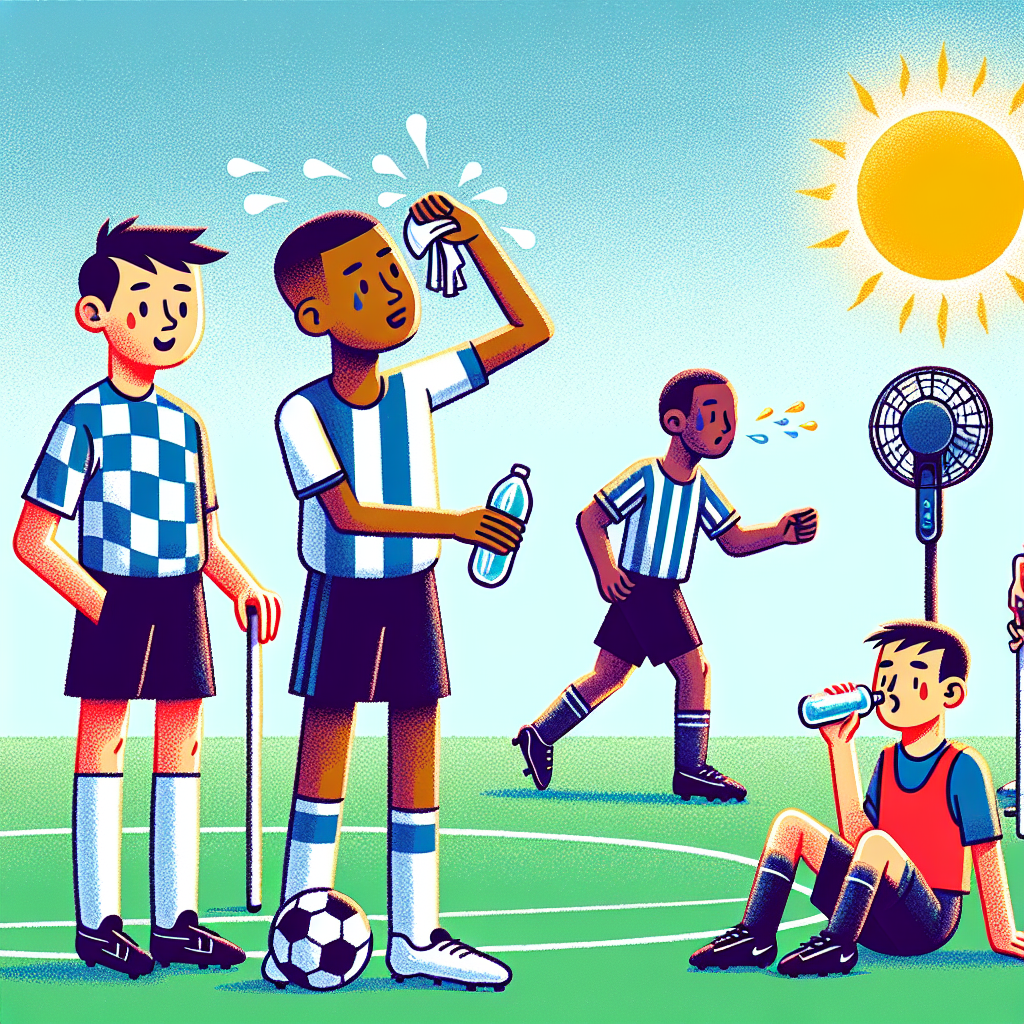
More on the impacat of heat stress on soccer players’ performance
A recent surge in studies has focused on the impact of external conditions, such as extreme heat, on athletes. With increasing global temperatures, understanding how heat stress affects soccer players is more crucial than ever. Let’s delve into the science behind this phenomenon and explore strategies to mitigate its impact.
The Science of Heat Stress in Soccer
Research has shown that playing soccer in high temperatures can significantly impair performance. According to a study by the World Health Organization (WHO), extreme heat is emerging as a significant threat to athletes’ health and performance. Heat stress can lead to dehydration, heat exhaustion, and even heat stroke, impacting players’ endurance, decision-making, and overall gameplay.
A separate study on Tokyo residents highlighted how longer commutes and smaller living spaces are affecting sleep, further aggravating heat stress symptoms. The implications are clear: inadequate sleep and recovery contribute to poor performance under heat stress.
Effects of Heat Stress on Players
Physical Impact
Heat stress causes physiological changes, including increased heart rate and core body temperature. Players experience rapid dehydration, resulting in a reduced blood volume and increased cardiovascular strain. This results in faster onset of fatigue, decreased sprinting capacity, and impaired workload tolerance.
Mental Impact
Beyond physical effects, heat stress can degrade cognitive functions. Research indicates that decision-making speed and accuracy diminish as core body temperatures rise. This is crucial in soccer, where split-second decisions often determine match outcomes.
Strategies for Heat Stress Adaptation
Acclimatization
Gradual acclimatization to heat helps players build tolerance. Training during cooler parts of the day or simulating heat conditions in controlled environments can bolster players’ resilience.
Hydration and Nutrition
Ensuring optimal hydration is vital. Players should drink fluids containing electrolytes before, during, and after games. Nutrition also plays a role, as diets rich in antioxidants help combat the oxidative stress associated with heat exposure.
Technological Interventions
Innovations like advanced cooling vests or systems provide relief during breaks. Additionally, wearable tech can offer real-time data on players’ vital signs, enabling timely interventions.
Comprehensive Team Approaches
Addressing heat stress requires a comprehensive approach that involves players, coaches, and medical staff. Teams can optimize their training schedules, ensure proper gear, and prioritize rest to counteract the effects of the heat. Moreover, building mental resilience through psychological preparedness can empower players to cope better under such conditions.
The intersection of science and soccer continues to reveal insights into optimizing player performance. With climate change, understanding and mitigating heat stress becomes a crucial part of the game. By leveraging research and innovative strategies, teams can ensure their players remain at peak performance, regardless of external temperatures.



